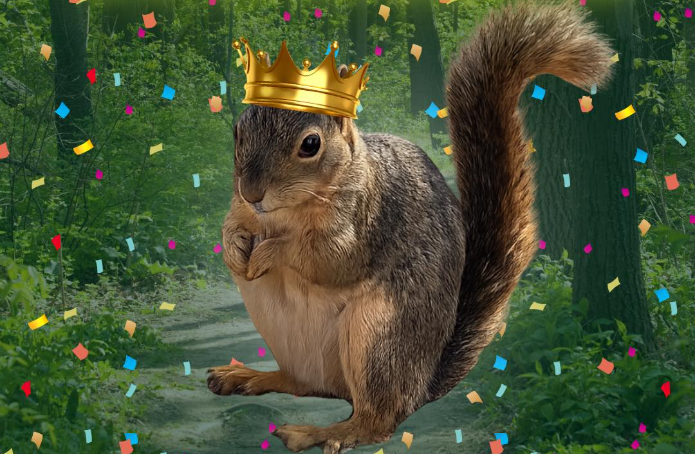Move over, Fat Bear Week — we’ve got a new fat animal in town.
Every year as fall begins, outdoor enthusiasts observe the holiest of traditions: crowning the fattest bear at Brooks River in Alaska’s Katmai National Park. This year’s winner was 32 Chunk, who faced an uphill battle after suffering a broken jaw but persevered to claim the title nonetheless.
You might wonder what Texas’ version of Fat Bear Week would be. Fat armadillos? Longhorns? Deer?
On Oct. 19, Texas Parks and Wildlife debuted its “Fat Squirrel Week” bracket, pitting squirrels from various state parks against each other for a Facebook vote.
And there were some strong competitors. Hill Country State Natural Area in Bandera’s “Big Red” faced “Stanley the Texas Tank” from Cleburne State Park in North Texas (the Tank came out on top, making it all the way to the semi-finals). Fort Parker’s “Nutella” brought a beautiful burnt orange fur to the competition, but ultimately fell short of fattest. Caprock Canyon State Park offered up “Phinn the Phat” to compete against Goose Island’s “Mama Maple.” Phinn’s technically a prairie dog (still counts!) and charmed voters with his rotund figure and affinity for barking at strangers. But it all came down Dinosaur Valley’s “Chunkosaurus Rex” against Fort Richardson’s “Chunk Norris” in the finals, with the aptly dino-named squirrel taking home the W.
The champion is apparently a popular figure at the park, with one person writing on Facebook that “he always comes to visit when I stay at site 24…love that ‘little’ fella.”
According to TPWD, experts think that some larger adult squirrels in Texas do hibernate briefly, or at least they spend a lot of their time underground in the winter months. They prepare by building up a layer of body fat, and they store food in their burrows or hide it elsewhere so they have food in the winter. Younger, smaller squirrels usually don’t hibernate or spend as much time underground because they can’t build up as much body fat due to their smaller size. According to the New York Times, some species of squirrels can gain as much as 63 percent of their body weight heading into the winter — though those are Arctic ground squirrels, not found in Texas.
TPWD didn’t say how big Chunkosaurus Rex really is, nor did they confirm what type of squirrel he is. But experts say some fox squirrels could be as big as 52 centimeters long, or about 20 inches, with the squirrel’s tail taking up about half of that length. These squirrels usually weigh less than two pounds. Gray squirrels are smaller, only about 17 inches long and weighing about a pound.
Dinosaur Valley State Park wrote on Facebook that the squirrel, “Chunk” for short (missed opportunity to call him C.rex), is a fan of borrowing snacks from campers. They also wrote that he “spends most of his day waddling from one shady oak to the next, cheeks stuffed.”
May we all spend our winters this way, too.

